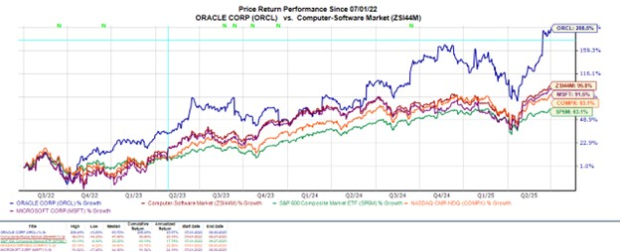Coffee Prices Slide Amid Rising Inventories and Supply Concerns
Today, May arabica coffee (KCK25) sees a dip of -9.70 (-2.46%), while May ICE robusta coffee (RMK25) declines by -76 (-1.37%).
Increased Inventories Prompt Price Declines
Coffee prices are feeling the heat as heightened ICE coffee inventories ease supply concerns. On Tuesday, ICE-monitored arabica coffee stocks increased to a one-week high of 803,032 bags. Similarly, robusta coffee inventories reached a one-month high of 4,356 lots as of last Friday.
Surplus Expectations Impact Market Sentiment
An additional bearish factor for prices emerged from a report by Marex Solutions. It predicts the global coffee surplus for the 2025/26 season will escalate to 1.2 million bags, up from the +200,000 bags anticipated for the 2024/25 season. Furthermore, a report from Vietnam’s General Statistics Office shows that February coffee exports from Vietnam rose by 6.6% year-over-year to 169,000 metric tons—Vietnam being the world’s leading robusta coffee producer.
Potential Support from Weather Conditions
Contrasting the bearish sentiment, below-normal rainfall in Brazil could lend support to coffee prices. Somar Meteorologia reported that Brazil’s major arabica coffee-growing region, Minas Gerais, received just 1.1 mm of rain during the week ending March 8—merely 2% of the historical average. Additionally, as the dollar index (DXY00) plummeted to a 4-3/4 month low on Tuesday, coffee prices found some support.
Supply Fears Continue to Influence Prices
Concerns over supply persist, as indicated by Cecafe’s report on February 12 revealing a -1.6% year-on-year decrease in Brazil’s January green coffee exports, which totaled 3.98 million bags. Additionally, Brazil’s government crop forecasting agency, Conab, projected a -4.4% year-on-year decline in the 2025/26 coffee crop, estimating production at a three-year low of 51.81 million bags. Moreover, Conab adjusted its 2024 coffee crop estimate down -1.1% to 54.2 million bags, from the previous estimate of 54.8 million bags.
Long-Term Impacts of El Nino
The long-term effects of last year’s dry El Nino weather may cause lasting damage to coffee crops in South and Central America. Brazil has experienced below-average rainfall since last April, which has hurt coffee trees during the crucial flowering stage, thereby diminishing prospects for the 2025/26 arabica coffee crop forecast. Cemaden, Brazil’s natural disaster monitoring center, reported that Brazil is undergoing its driest weather since 1981, while Colombia, the world’s second-largest arabica producer, struggles to recover from drought conditions caused by El Nino last year.
Robusta Production Challenges
Production cuts have propped up robusta coffee prices. Vietnam’s drought led to a -20% decline in coffee production for the 2023/24 crop year, dropping to 1.472 million metric tons—the smallest yield in four years. The USDA FAS anticipates a slight dip in Vietnam’s robusta production for the 2024/25 marketing year to 27.9 million bags from 28 million bags in 2023/24. Conversely, Vietnam’s coffee exports are expected to decrease by -17.1% year-on-year to 1.35 million metric tons, as reported on January 10. On a brighter note, the Vietnam Coffee and Cocoa Association raised its 2024/25 production estimate to 28 million bags from an earlier projection of 27 million bags on December 3.
Global Coffee Export Trends
Burdening the market further, reports of rising global coffee exports add bearish pressure to prices. Conab indicated that Brazil’s coffee exports increased by +28.8% year-on-year, hitting a record 50.5 million bags for 2024. However, the ICO reported that December global coffee exports declined by -12.4% year-on-year to 10.73 million bags, and global coffee shipments for the October-December quarter fell -0.8% year-on-year to 32.25 million bags.
USDA Reports: Mixed Messages for Coffee
The USDA’s biannual report, released on December 18, provided mixed signals for coffee markets. The USDA’s Foreign Agriculture Service (FAS) projected a +4.0% increase in world coffee production for the 2024/25 season, totaling 174.855 million bags. This includes a +1.5% rise in arabica production to 97.845 million bags and a +7.5% increase in robusta production to 77.01 million bags. Nevertheless, the USDA forecasts that ending stocks for the 2024/25 season will decline -6.6% to a 25-year low of 20.867 million bags from the 22.347 million bags recorded in 2023/24.
Future Projections for Arabica Coffee
For the 2025/26 marketing year, Volcafe revised its Brazil arabica coffee production estimate downward to 34.4 million bags, a reduction of approximately 11 million bags from its September forecast. This stems from a crop tour that quantified the impact of the ongoing drought in Brazil. Volcafe now projects a global deficit for the 2025/26 arabica coffee crop of -8.5 million bags, worsening from the -5.5 million bag deficit initially anticipated for 2024/25, marking the fifth consecutive year of deficits.
On the date of publication, Rich Asplund did not have (either directly or indirectly) positions in any of the securities mentioned in this article. All information and data in this article are solely for informational purposes. For more details, please view the Barchart Disclosure Policy.
here.
More news from Barchart
The views and opinions expressed herein are the views and opinions of the author and do not necessarily reflect those of Nasdaq, Inc.



